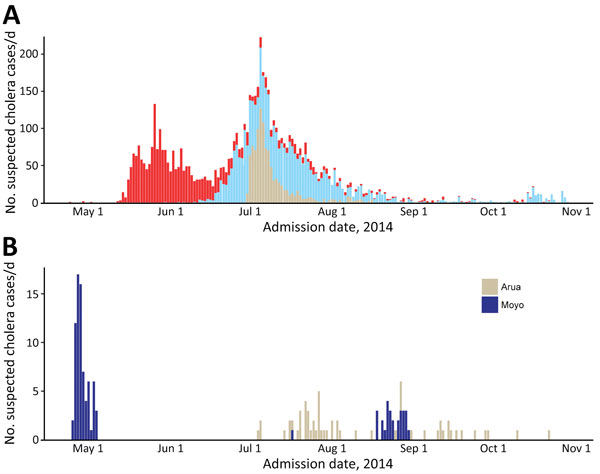Volume 24, Number 5—May 2018
Dispatch
Cholera Epidemic in South Sudan and Uganda and Need for International Collaboration in Cholera Control
Figure 2

Figure 2. Epidemic curve of suspected cholera cases in South Sudan (A) and Uganda (B) in 2014, by hospital admission date and region.
1These authors contributed equally to this article.
Page created: April 17, 2018
Page updated: April 17, 2018
Page reviewed: April 17, 2018
The conclusions, findings, and opinions expressed by authors contributing to this journal do not necessarily reflect the official position of the U.S. Department of Health and Human Services, the Public Health Service, the Centers for Disease Control and Prevention, or the authors' affiliated institutions. Use of trade names is for identification only and does not imply endorsement by any of the groups named above.